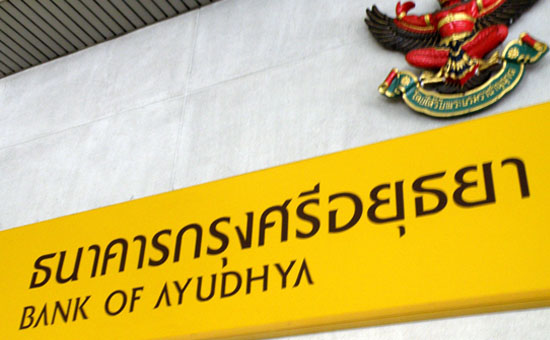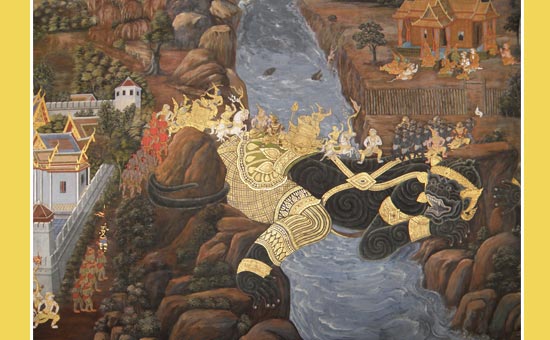- Article tells how Ramayana is inter-woven into the culture of ASEAN countries.
- Indians practiced globalization differently from how the West and China do so such that Indonesians showcase Ramayana to this day.
We in India have celebrated 25 years of Indo-ASEAN relations but they go
deep down the historical lane of two millennia. Among other cultural aspects
permeation of the epic stories Ramayana and Mahabharata in the lives of
millions of men and women in ASEAN countries plays a key role in building
cultural bridges of everlasting friendship.
Ramayana does not belong to India only because over the centuries it has
become the lyric of Asia and our common cultural heritage. Indonesia had
celebrated the first Ramayana Festival in 1971.
Ramayana itself speaks about Bali and Java islands. But the history of
its first reaching the ASEAN countries is shrouded in mystery in-spite of its
widespread popularity, publication of various versions created by these
countries over the past centuries, discovery of a large number of panels based
on the stories of Ramayana decorating the walls of temples instilling moral and
social values in the minds of the people or for celebrating certain occasions.
Ramayana is adopted in a number of spheres of society as a source of
leading an ideal life. It is not just a book of beautiful poetry, it is a
Dharma Shastra expounding lofty ethical ideal.
Episodes taken from them are played in the forms of
shadow plays and dance dramas in Indonesia, Malaysia, Thailand and Burma.
Ramayana ballets in these countries are mesmerizing. The artists become one
with the characters playing their roles. They feel sad for the agony of Devi
Sita and find it difficult to act as Lord Rama because of their feelings
honoring him as a lord. Most of the artists in Indonesia are Muslims but they
find a great joy in performing it because it is their own culture.
All over ASEAN countries there are many versions of
Ramayana.
Kumaradasa composed Janaki-harana in Srilanka in 7th century
CE; the Malaysians call it Hikayet Seri Rama; when was it adopted in Cambodia
is not known but they call it Ramakerti; in Phillipines it is popular as
Maharadia Lawana. Indonesia had several Ramayana texts composed by the
Indonesians themselves.
The best known is Ramayana Kakawin written in 8th century
which is compared to Bhattikavya. Its author seems to be a genius
trans-creating the story in an amazingly simple structure and limpid flow of
words. They also wrote Kakavin Janaki and Ravana-vadha etc.
The earliest engraved Ramayana can be seen on the
walls of a 9th century Shiva temple - Prambanan. The best
performance that I have seen is at the court yard of this temple where more
than a hundred dance together with thrilling movements.
There are some variations as well in the story like when Devi Sita
enters fire to prove her sanctity, the God of Fire appears and bows to her
saying - it is not an ordeal for her but by her entry into fire Agni Deva
itself is purified. The scene is really moving when hundreds of dancers come to
the stage with fluttering garments where audience can feel the flames of fire
full of sadness.
Ramayana has a very strong influence on the Thai
way of life, from Royalty to commoners.
![]()
 Bank of Ayudya, Bangkok.
Bank of Ayudya, Bangkok.
All the kings of the Chakri Dynasty, Thailand are given the title of "Rama" because Rama was an incarnation of Vishnu - the sustainer of the world. The former King Bhumipol Adulyadej, ruled as Rama 9th.
People of all classes and education levels know the stories from their
childhood.
King Rama 2nd translated the Indian version of Ramayana into
Thai and it is included in school and university curricula. It has become part
of Thai literature and has been adapted to suit Thai culture. Ramayana story
has been painted on the walls of the Royal temple.
 Ramayana painted on walls of Emerald Buddha Mandir, Bangkok.
Ramayana painted on walls of Emerald Buddha Mandir, Bangkok.
Statues of enormous Asuras stand around the temple with their clubs to
protect the place. Beautiful pictures of the main characters can be often seen
printed on a variety of objects like skirts and shirts. Dolls representing
these characters are quite popular with the tourists.
Two of their cities are Ayuttya and Lobpuri from Ayodhya and Lavapuri. To
see pictures of Ayuttya
or Ayutthya.
Hindu religion and culture was practiced during the Khmer Empire in Cambodia. Indian immigrants may be traders, mainly
from South India going to Indo-China before 3rd Century B.C. might have carried
it with them. It is mentioned in Cambodian Sanskrit inscriptions that copies of
Ramayana, Mahabharata, Puranas and Manusmriti were brought by the Cambodians
for recitation in temples.
When and how Ramayana occupied a place of pride in Myanmar's heart is a topic for academic debate. But the oral tradition of the Rama story can be traced as far back as the reign of King Anawrahta (A.D.1044-77), the founder of the first Myanmar Empire. In later periods there are ample archaeological, historical and literary evidence to show that Ramayana entered into Myanmar culture at an early date.
At old Bagan is a Vishnu Temple known as Nat Hlaung Kyaung which is adorned with some stone figures of Rama
and Parasu Rama. The Rama story is depicted in the Jataka series of terra-cotta
plaques on the panels of Petlcik Pagoda in Bagan.
In a stone inscription in the Mon language, King Kyanzittha (A.D.1084-1113)
of Bagan dynasty proclaimed that in his previous existence he was a close
relative of Rama of Ayodhya. Rama has been continuously present in the cultures
of the post-Bagan periods.
In all media of visual arts and all forms of literary art, Ramayana was
the favourite theme. Contacts with neighbouring countries with Hindu cultural
influence such as Linzin (Laos), Zimme (Chiengmei), Ayuthia (Thailand) and
Malayu (Malaysia) further contributed to the development of Ramayana as the
popular theme in Myanmar performing arts.
In spite of the mod and pop cultures through entertainment media,
Ramayana remains to stay. New generations adopt Ramayana as the theme of their
artistic creations and means of expressing their inner feelings.
One modern novelist pen-named Chit Oo Nyo of Myanmar wrote a fiction entitled
Achit Shone Thama, Dasagiri (Ravan
the Loser of Love) based on Ramayana. With the same title a pop song appeared
and it was first sung by a note vocalist Accordian Ohn Kyaw and later by a
pop-star Hlwan Moe. It is still the favourite of the young. There are yet other
novels, short stories and songs with the trappings of Ramayana.
Looking at the scale of insightful bearing of Ramayana on the lives of the people of ASEAN countries it comes to my mind extemporaneously-
यावत स्थास्यन्ति गिरयः सरितश्च महीतले /
तावत रामायणी कथा लोकेषु प्रचरिष्यति//
Meaning - the story of Ramayana will remain popular in the world as far
as there are mountains and rivers on the earth.
Article
was first published in The Statesman and here. Author has permitted esamskriti.com to share on its platform. Thank you – Dhanyavad.
Author, Prof. Dr. Shashibala, is Dean, Centre of Indology, BHARATIYA VIDYA
BHAVAN, New Delhi. Article pictures courtesy Sanjeev Nayyar.
To read all
articles by author
Also read
1. Ramayanas
of South and Southeast Asia
2. Ramayana
in Southeast Asia and India
3. Pictures
of Emerald Buddha Temple Bangkok